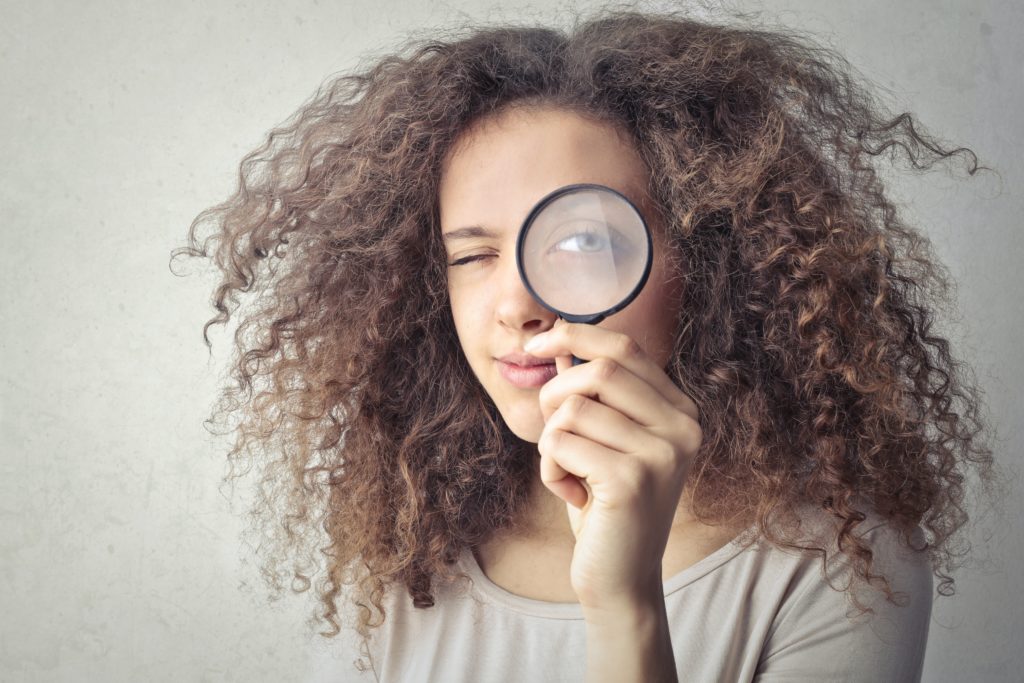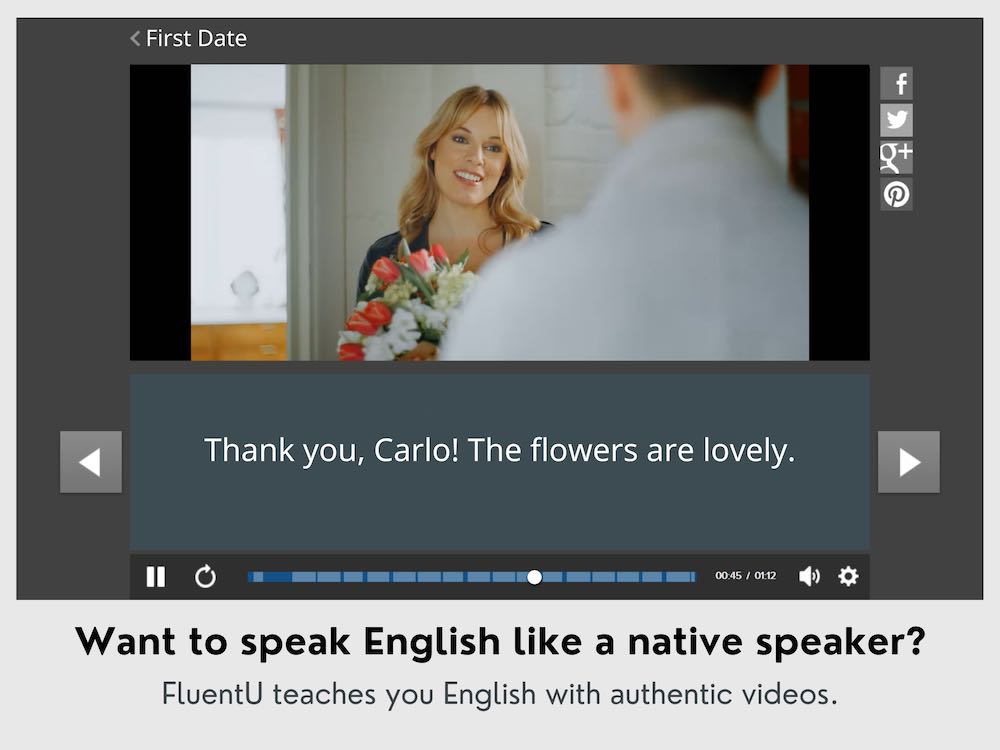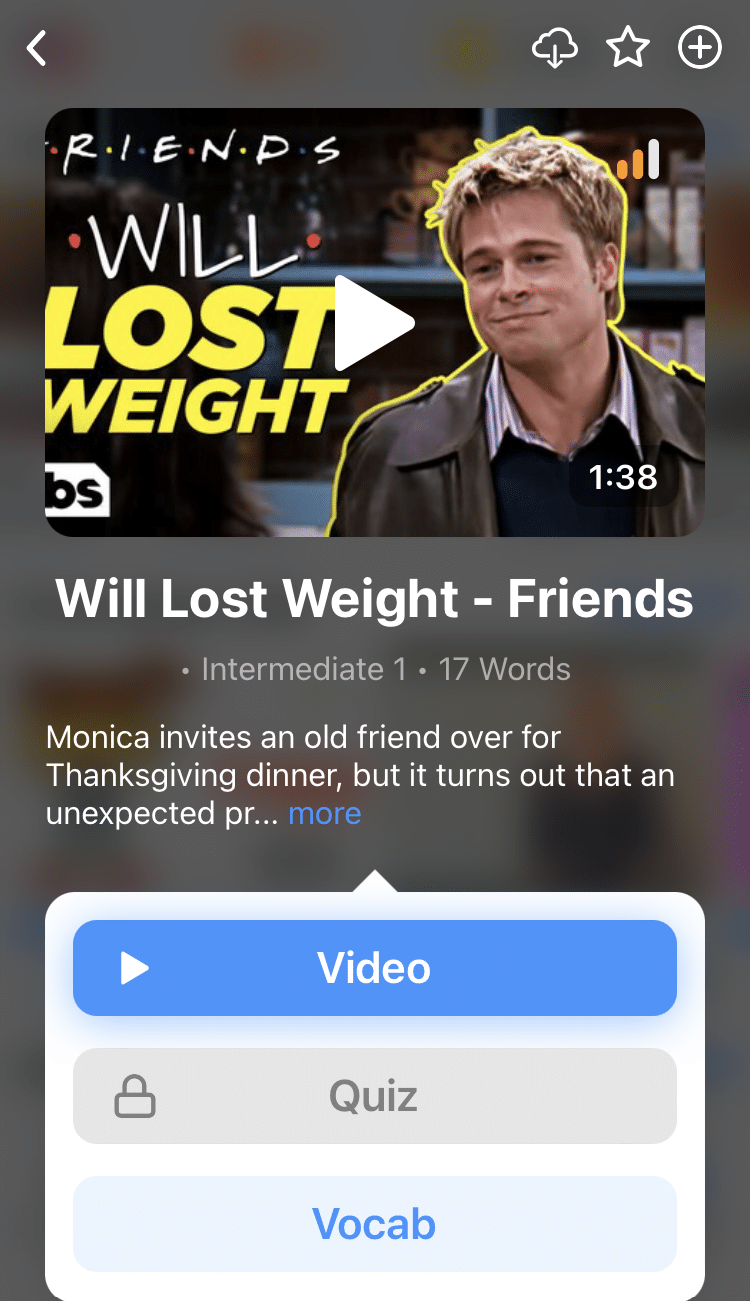
Look, See, Watch: What’s the Difference?
“Look,” “see” and “watch” are three words that sound very similar, but they actually have different meanings. They’re all connected to viewing things with your eyes, so English learners often mix them up.
I’ll explain in detail how these important English verbs work and when to use each one, with plenty of examples. Here’s a quick video explanation to get you started:
Download: This blog post is available as a convenient and portable PDF that you can take anywhere. Click here to get a copy. (Download)
Contents
- Differences Between “Look,” “See” and “Watch”
- How to Use the Verbs “Look,” “See” and “Watch”
- Summing It Up
- Practice Resources
- And One More Thing...
Differences Between “Look,” “See” and “Watch”
Each verb has its own unique definition:
- To look at means to direct your eyes at something on purpose.
- To see means you notice or sense something with your eyes.
- To watch means you keep looking at something for a while, usually to see what happens or to guard it.
Here they are in similar sentences:
Can you please look at my laptop?
In this sentence, you want the other person to direct their attention to something on your laptop screen.
Did you see my laptop?
Here, you’re asking somebody if they noticed the location of your laptop.
Will you please watch my laptop?
You’re hoping the other person can guard your laptop for a period of time while you aren’t there (for example, if you’re working at the library and you have to go to the bathroom).
The meaning of the sentence changes depending on the verb.
Now let’s dig deeper into these three verbs so you’ll be able to use them confidently.
How to Use the Verbs “Look,” “See” and “Watch”
1. Look (to direct your eyes)
Look is meant to direct the attention of our eyes towards something specific.
It’s a more active verb—you’re moving your eyes on purpose. A good way to know when to use this verb is to imagine turning your whole body (or your head) to look at something.
Grammar Tips for “Look”
Look is often paired with the preposition at. For example:
Look at my new car.
Look at the sky! It’s a bird, it’s a plane…it’s Superman!
Look at my new shoes! Do you like them?
When I looked at the math questions on the exam, I began to laugh.
Look can be paired with some other prepositions as well:
Look to the left! Look to the right!
Look over here!
A great example of this verb is to listen to the lyrics of the song “Yellow” by the band Coldplay:
“Look at the stars, look how they shine for you.”
In this case, the lead singer is directing someone’s visual attention to a sky full of stars.
Look might be used to describe the appearance or aspect of someone or something.
You look very nice today. Did you change your hair?
The path looks a bit dangerous. Are you sure it’s safe?
Phrasal Verbs with “Look”
Look is used to form a number of common phrasal verbs. It’s usually short, sharp and snappy: Look here! Look there! Look up!
Let’s take a look at (direct our attention towards) a few:
Look into — To investigate something further.
Let’s look into the issue with the computer.
Look down (on) — To perceive or consider another person as inferior to yourself.
Sometimes I feel like they look down on us.
Look up (to) — To admire or respect another.
I look up to my mother because she is an incredible woman.
2. See (to perceive with your eyes)
Here’s the basic meaning of see:
- See talks about the ability to perceive something with the eyes.
- See is less active than look. To “see” something doesn’t necessarily mean you directed attention to it on purpose.
When you look at something, you are actively doing something. See is much more passive.
If it helps, you can think of seeing as something innate (something we’re born with, or something inside of us). A newborn baby is able to see, because a baby has eyes that observe anything around it.
A great way to know if you’re using see correctly is to replace it with the words witness or notice. If the sentence still makes sense, you’re probably using the right word.
Did you see Bill on the street?
Did you notice/witness Bill on the street?
Again, remember: seeing is less active, and is more about passively perceiving something.
Did you see that purple car pass by?
Have you seen my bicycle?
I was looking out the window and saw a beautiful bird.
Louis Armstrong, in his famous song “What a Wonderful World,” perfectly highlights the use of the word see:
“I see trees of green, red roses too. I see them bloom, for me and you.”
Other Usages of “See”
See can also refer to shocking or surprising events that happen before our eyes:
Did you see that!? A bus just crashed into that car!
I can’t believe what I’m seeing!
Finally, we use see when we talk about visiting or spending time with people:
I went to see my parents last weekend.
I’m having dinner with my friend tomorrow. I’m very excited to see her.
Phrasal Verbs with “See”
See can be used to create a number of useful phrasal verbs.
See (something) through — To continue an act until it’s finished.
I’m going to see this year of university through to the end and then decide what to do after.
See to — To manage or deal with a situation.
He’s a criminal and I’m going to see to his immediate arrest.
3. Watch (to look attentively for a longer time)
Here are some key characteristics that define watch:
- Watch is defined by an extended focus toward a particular object or event.
- Watch implies some level of comprehension, focus or attention from the watcher.
- In this way, watch is a very active verb.
How to Use “Watch”
To watch usually involves concentration or attention, so it’s frequently used for things like movies, TV or other forms of entertainment that involve your eyes:
You have to watch this new documentary. It is amazing!
I watch a movie every Friday night.
Tourists visit from around the world to watch the sunset over the Taj Mahal.
Watch is also used if there’s information that needs to be learned. For example:
Are you going to watch the news tonight?
Did you watch the live stream of the lecture last night?
Watch me and I’ll show you how to do it.
In general, use watch to talk about anything that requires extended focus:
Watch me! I’m going to do a magic trick.
Can you watch the dog while I take a nap?
Phrasal Verbs with “Watch”
Watch is a very cautioufs verb, and this is often reflected in its phrasal verbs.
Watch out — A command to be careful of potential danger.
Watch out! There’s a snake in front of you.
Watch out (for someone) — To look after or care for.
Can you watch out for my brother while I’m away at university next year?
Watch it — A threat or a warning to another about their behavior or activities.
Don’t speak to me like that, you’d better watch it!
Summing It Up
In short, here’s how you can tell “look,” “see,” and “watch” apart:
- See is the simplest out of the three—you notice something with your eyes without even having to try.
- Look involves still using your eyes, but you’re doing it on purpose.
- Watch means looking at something for a while and paying close attention to it, such as a movie or a game.
Practice Resources
The best way to practice these three verbs is through immersion. If you read and listen to lots of native English conversations, you’ll learn the differences between these three verbs.
Try reading easy English books and stories. If you read them out loud, you’ll hear these verbs used in their correct form.
While reading, practice writing sentences with the three verbs. If possible, have your sentences corrected by a native-speaking partner or teacher.
You can also listen to these words (and many more) in use by native English speakers on FluentU.
FluentU takes authentic videos—like music videos, movie trailers, news and inspiring talks—and turns them into personalized language learning lessons.
You can try FluentU for free for 2 weeks. Check out the website or download the iOS app or Android app.
P.S. Click here to take advantage of our current sale! (Expires at the end of this month.)

Immersive practice will help you learn the subtle (small, difficult to notice) differences in the meanings of look, see and watch.
So, there you have it—that’s how you can tell “look,” “see” and “watch” apart.
Verbs can be a very tricky component of English language learning. But with consistent practice, you’ll understand the fundamentals in no time. Keep at it!
Download: This blog post is available as a convenient and portable PDF that you can take anywhere. Click here to get a copy. (Download)
And One More Thing...
If you like learning English through movies and online media, you should also check out FluentU. FluentU lets you learn English from popular talk shows, catchy music videos and funny commercials, as you can see here:
The FluentU app and website makes it really easy to watch English videos. There are captions that are interactive. That means you can tap on any word to see an image, definition, and useful examples.
For example, when you tap on the word "searching," you see this:
Learn all the vocabulary in any video with quizzes. Swipe left or right to see more examples for the word you’re learning.

FluentU helps you learn fast with useful questions and multiple examples. Learn more.
The best part? FluentU remembers the vocabulary that you’re learning. It gives you extra practice with difficult words—and reminds you when it’s time to review what you’ve learned. You have a truly personalized experience.
Start using the FluentU website on your computer or tablet or, better yet, download the FluentU app from the iTunes or Google Play store. Click here to take advantage of our current sale! (Expires at the end of this month.)











